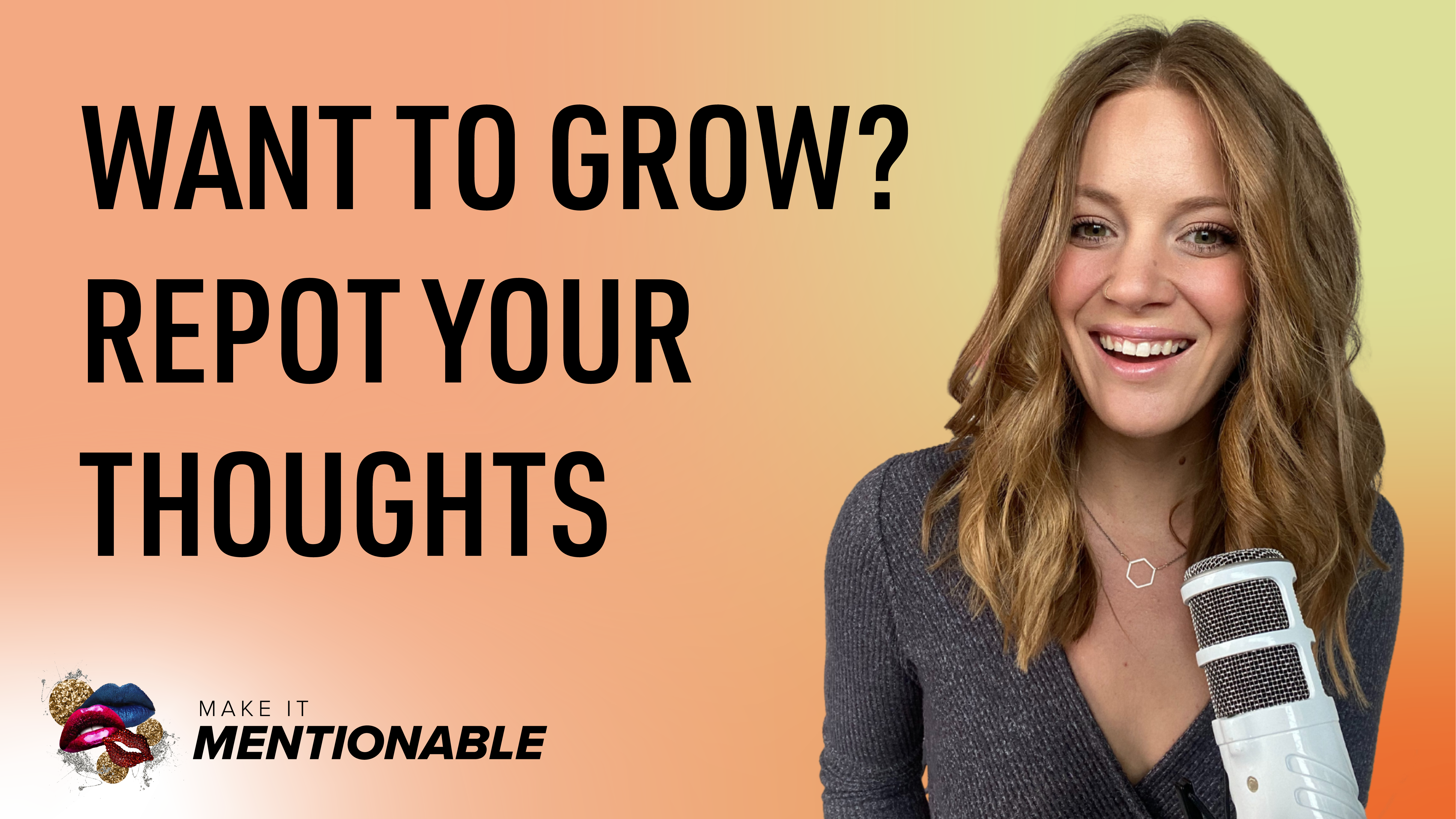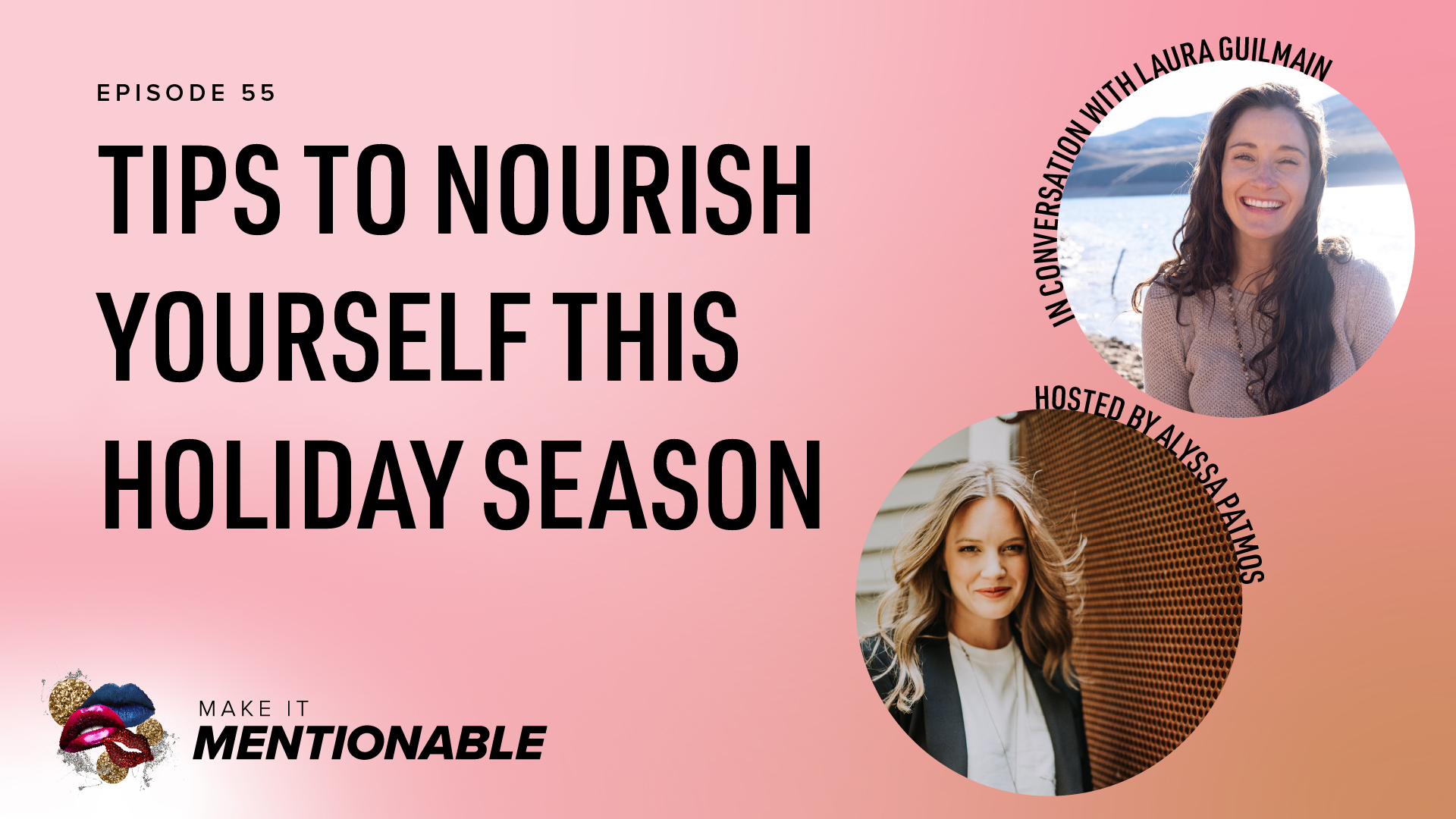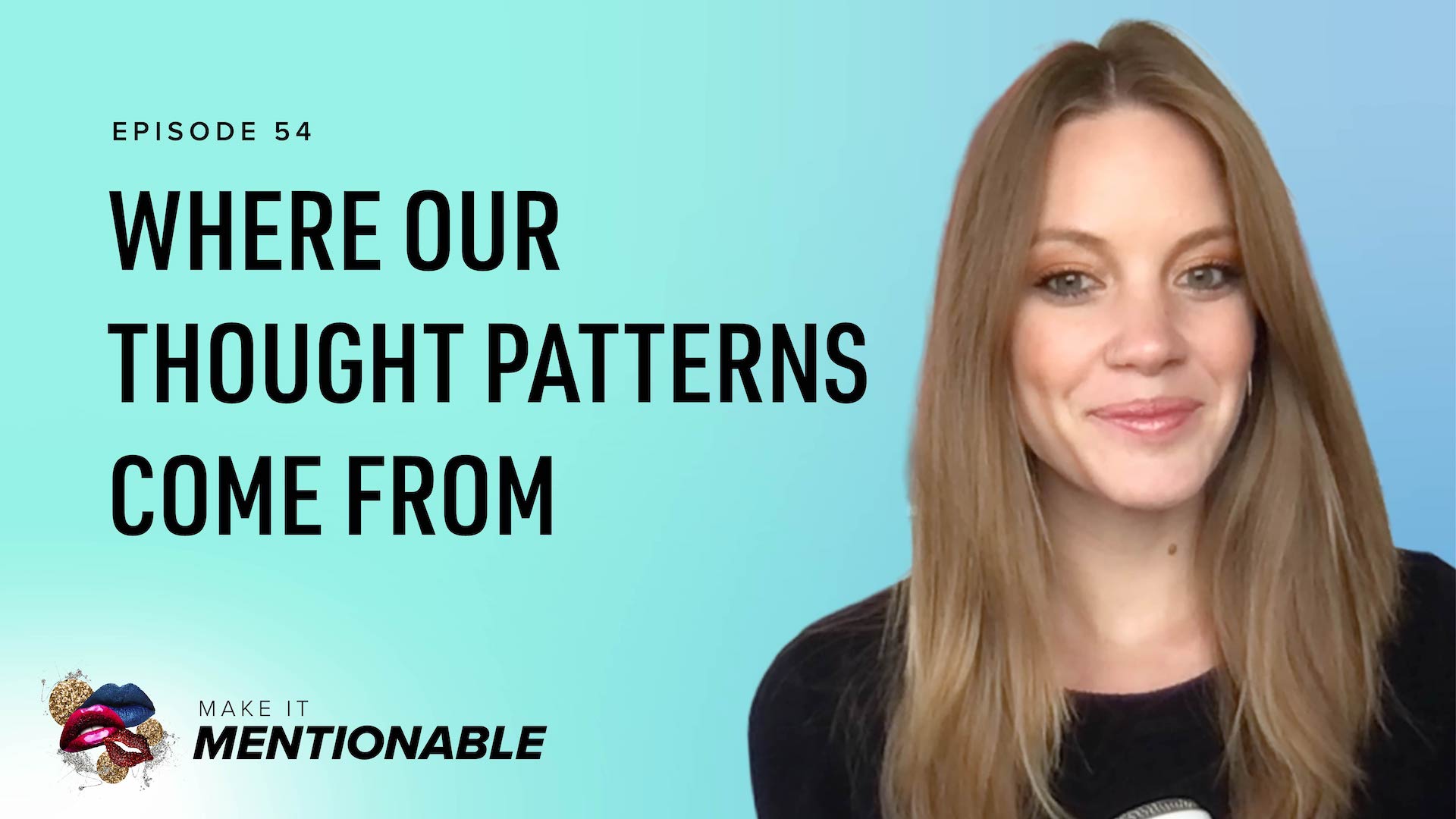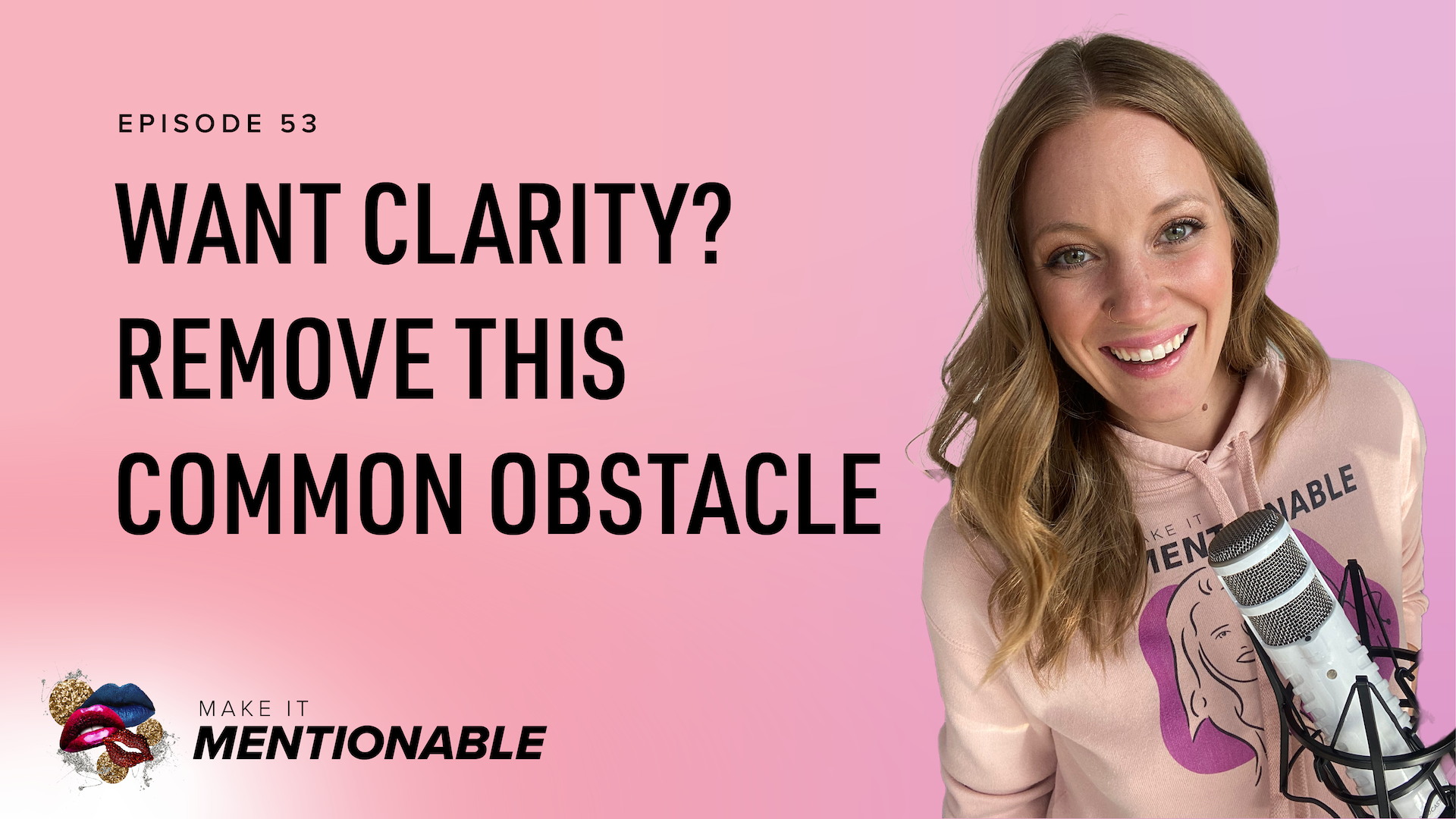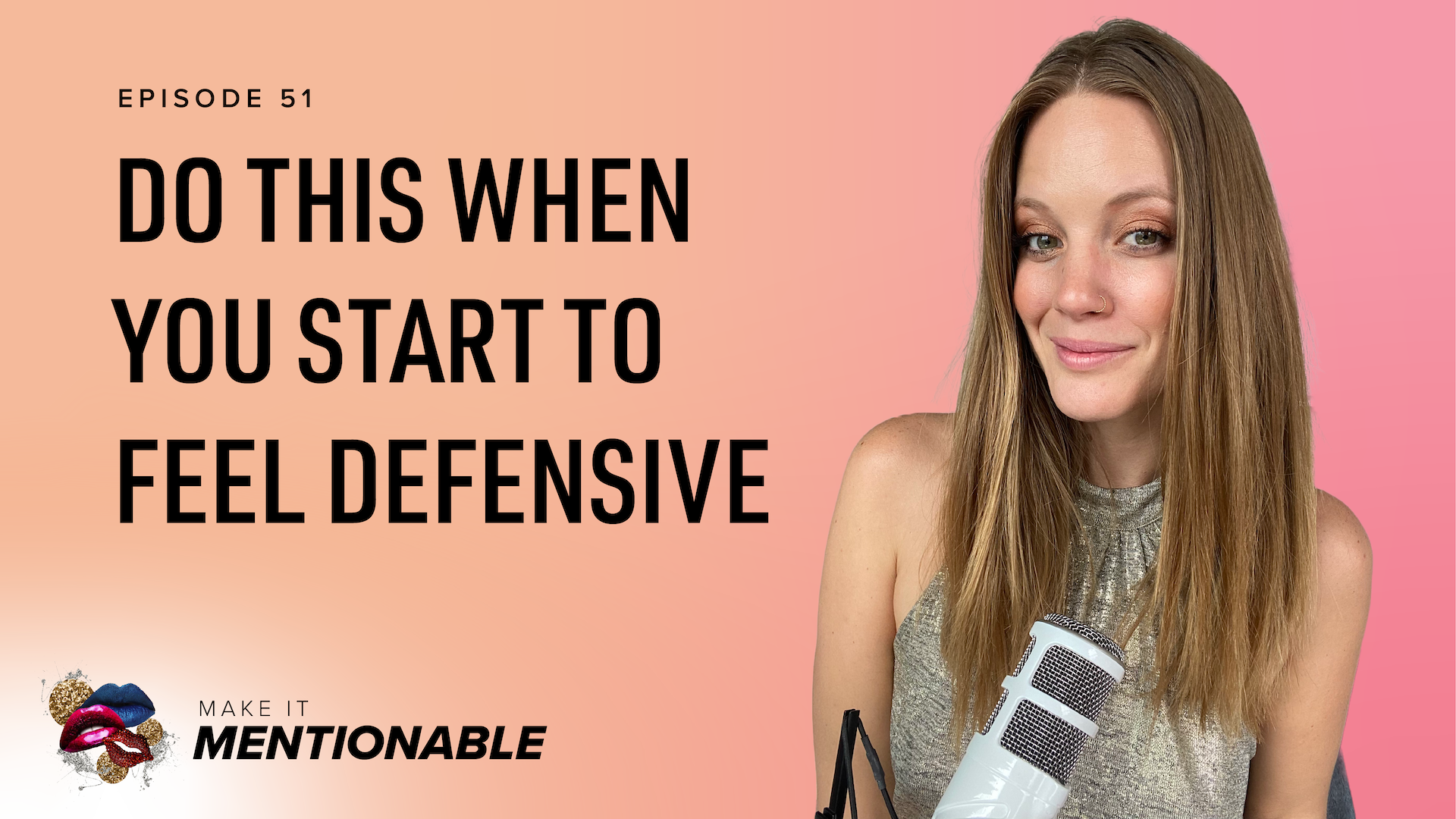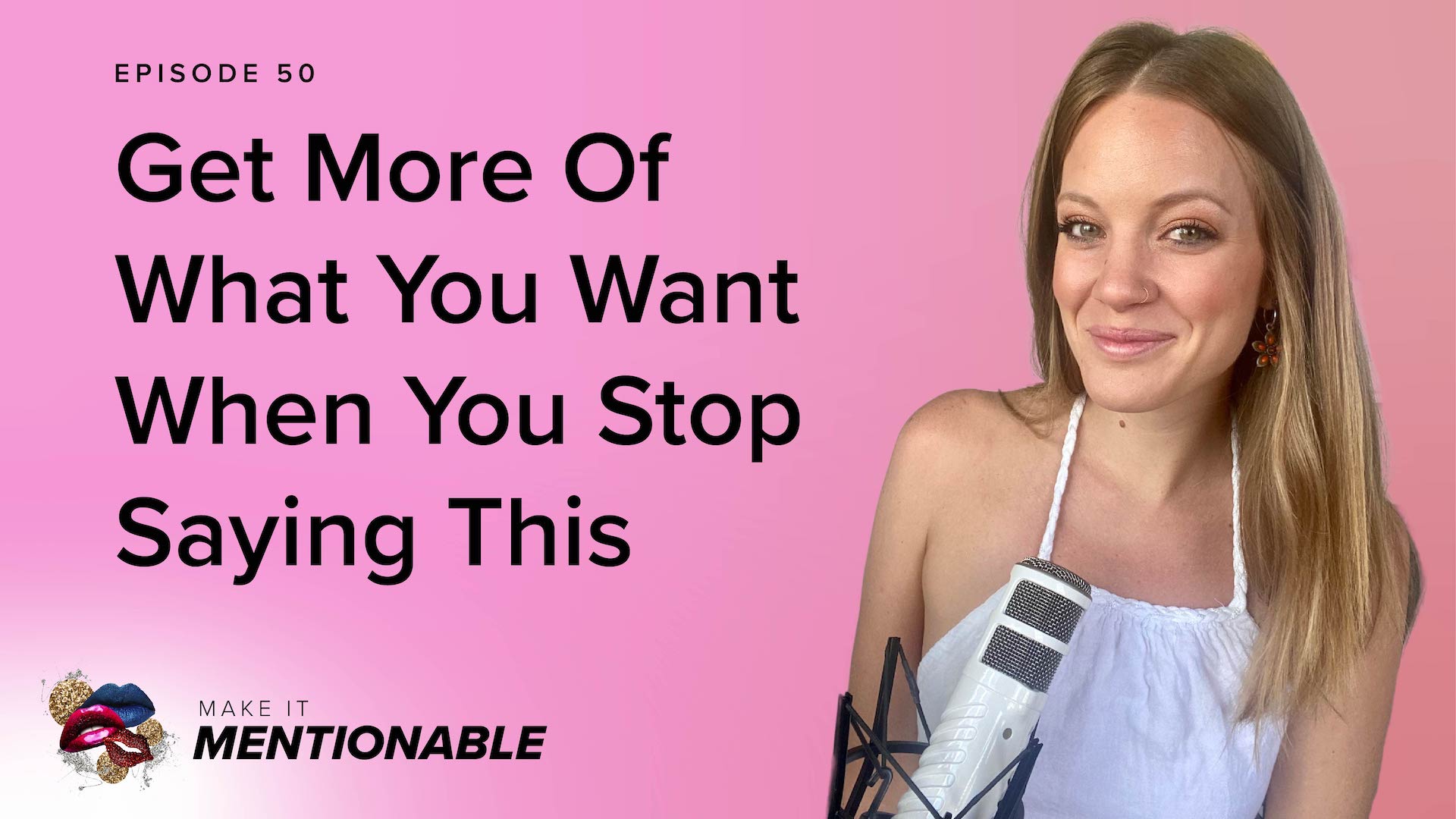Alyssa Patmos 0:04
This is Make It Mentionable. I’m Alyssa Patmos and this is the show about being human in a world that encourages us to be robots. I invite you to join me as we journey through the mess, the magic and the mania in between. Because what we can talk about, we can manage. This honest conversation extravaganza includes free flowing conversations and high doses of vulnerability to remind you that you aren’t alone. No topic is off limits, and episodes are designed to leave you smarter, aka more self aware than when you came. I am so glad you’re here.
Hello, Hello. And welcome back to another episode of Make It Mentionable. I’m your host, Alyssa Patmos. And this week, we are talking about how we can create space for growth, how we can create room for growth. And if you’re listening to this podcast, I’m assuming that you might have a mild obsession with growing either personally or professionally or at least have a curiosity about how you can more intentionally evolve. And so I want this whole thought thread around creating space for growth actually started with one of my houseplants. And if you’ve been listening to the show for any amount of time, you likely know that I named my houseplants. We’ve definitely talked about Olivia, the orchid on here. I think we might have talked about Miss money, the money tree. But this week, we are talking about Phineas and I have no idea what type of plant Phineas is, if I’m being honest. He has, like needle like leaves. If they’re needles, I’m not even sure if they’re considered leaves. But anyway, very thin, kind of like needle leaves. And he works great to say on an end table. And so recently, no, this is like a few months ago, Jeff and I were going to the store I made a wrong turn. And we ended up in a plant shop. And I ended up finding a new pot for Phineas and this was great because we had gotten new end tables and I didn’t really like the pot that he was in. So I got this new one and it’s smooth and black and ceramic and I love it. It looks great on the table. And so I repotted Phineas. And what happened I was kind of astonished so before I think he was in like a three inch container like three inch pot, but it was housed in a bigger one
with just like soil around it, but he himself like he could only he was in a three inch pot. And so this this new pot is probably five inches. And so a few weeks later, I had always known Phineas to be the same size, he would regrow new leaves, he would shed some of the needles at times, and he would get taller, but generally speaking, he was usually the same size. After I repotted him, he has grown like crazy, like crazy. Apparently, Phineas wants to be a tree, because he has gotten way bigger. Within a few weeks of repotting him, he he grew to new off shoots that were longer than any of the other ones. And just this last week, he has another one that’s going to be as long and he’s just like reaching for the sun. And he’s thriving. He’s so happy. So Sammy, thinking about pots and the pots and containers that we find ourselves in. Because if I had wanted Phineas to grow, I could have tried watering him more. That’s that’s one thing that we do to try and make sure that plants thrive. But similarly to how to how we were talking about saturated sponges last week. It can we can also overwater them. And you know so one way we think of growing, whether it’s personally or professionally is sometimes to just absorb new knowledge. It’s like okay, if I if I learn more, like I’m sure to grow, right. But like the sponge, and like plants, too much water is the thing too much knowledge can be can be a thing, or we can saturate ourselves with too much knowledge. And so it’s not always a helpful way to grow. Another thing could be moving. If I move Phineas to a different place, okay, maybe there’s more light maybe there’s less light and maybe he grows there. And a lot of times we do this we think okay, something is feeling sticky. Something’s feeling off like, do I need to move do I need to switch positions do I need to change the relationship? Do I like need move losses, but that New environment isn’t guaranteed to help us thrive, either. A lot of times we avoid looking at the inner stuff, we feel like something is wrong. And externally, we see these big buckets of life, job career, finances, the communities, we’re part of the relationship or family, and we want to find something wrong with one of those areas. And that’s great, but we might end up, we might end up seeing the wrong thing, we might end up making a drastic change. And that’s not actually what needed to be addressed. And then a few months down the road, we’re just gonna end up feeling the exact same way. And so different solution is to go inward and start to look at, like, what’s happening with the roots here, what’s happening with the roots, because it might be like vinius, where they just need some more room to grow. But the way that we’ve been raised or the current thought patterns that we find ourselves in, where we’re constraining ourselves, and so one of the simplest ways to find more room for growth is not to like completely overhaul your life. Sometimes that’s needed. I mean, this is coming from the person who’s moved across the country twice on a whim. So sometimes that is needed. But other times, other times it’s not we think it might be or we think it might be the answer, but it’s not actually it might just be that, hey, we have some roots that are that are that have been growing, and they need more space now. And once they have more space, we can start to see more possibility, we can start to see different perspectives. And so you know, people come to me, when, or I should say, one of the reasons people come to me is when they know that they’re, they’re feeling stuck, like they want to make a change. But they’re not exactly sure how, or what that looks like, or, or maybe they can’t see all of the dimensions of it. So you know, they could have been going to therapy for years, and they know what patterns are coming up. But they’re just not sure how to make this next change. Or, you know, they, they could be feeling like they need to switch jobs, but they’re not entirely sure why or what they want, or where they want to go. Or you know, some people it’s like, they’re in a relationship, and there’s nothing like, that seems like it’s wrong, but they’re not really content, they’re not really satisfied, and they find themselves like googling divorce papers every few weeks. And, and in those situations. Sure, we can look externally like, yeah, maybe your boss isn’t the greatest and so it would feel better to switch jobs, or, you know, maybe you the relationship has been stagnant for a while. But that, but
does that mean that it has to end? Again, in some cases, yes. But in other cases, we might not just be allowing ourselves to see the possibility, because our pot is constricting us, it’s a feel it’s restraining and the roots can’t grow, they can’t see new possibilities, they can’t gain new perspective, because we’re so stuck in that container. And so I started to think about, like, these mental houseplants that, that we can that we have, and it can be conditioning from our past it can be, you know, thoughts and beliefs that that have grown over time. And, and maybe just maybe they grew for a while and then they just stopped growing. And we just have this house plant that was like Phineas before I repotted him where just stayed the same size. This can come up a lot of times, you know, like, sometimes, let’s see, I had a client once who came in and they’re like, I’m not comfortable crying. And they didn’t. They, they were told not to cry, don’t cry as a kid. But, and then it just stayed like that. And so even as an adult when crying is an acceptable form of emotional expression at times, like they don’t they, they just didn’t cry. And it was like this pot had gotten stuck like the seed was planted, and then it grew. And then it was never repeated. And it just stayed the same size. That thought stayed the same. Even as new information was gathered, because there wasn’t anywhere for it to go. It couldn’t it couldn’t expand. And so what happens when we reap hot that, that thought that belief, all of a sudden we can see that, you know, crying is a way of of releasing emotion so that it doesn’t get trapped in our body. Crying is you know, a perfectly natural human thing. And oftentimes people say Don’t cry because they’re uncomfortable sitting with someone else’s discomfort. When we give ourselves the potential to see what houseplants exist, what mental health plants we have and then see, okay, what has really stayed the same for a long time and what might need to be repotted we start to see new possibilities and new potential all around us. Another one is, is often with relationships, you know, relationships are one of those big buckets of life where when we start to feel discontent, we start to look around, like, what’s going on, like, what is wrong there? What’s wrong, what’s wrong with this relationship? What’s wrong with the person I’m with, instead of looking inward, and I can get us into trouble because oftentimes, it’s not actually that huge bucket that needs to be completely overhauled. It’s smaller things that are feeling restricted that need to be repeated. So a mental health plant that can come up in relationships is our definitions of conflict. You know, conflict can feel scary, especially at different times in our life, when it feels like conflict means a lack of safety. And so, if our definition of conflict is like, it’s bad, and the relationship is doomed, okay, if we’re stuck in that pot, in that mode of thinking, then anytime conflict comes up, and maybe it’s been a harder period recently, and so complex coming up more and things feel more chaotic. And we’re thinking that the relationship is doomed. But if we can report that mental house plan into a bigger one, where all of a sudden, we’re able to remember that conflict is an unmet need poorly expressed, then when conflict comes up, there’s room to see the possibilities, and the relationship can continue to grow. And we can continue, we can continue to grow in the relationship those roots have more room to spread, and to explore, and to form a more of a foundation so that we can grow. And I think it’s I think this is there’s two phases to this. There’s the first part which is like okay, recognizing, recognizing which pots feel constricting right now. And I think that’s a practice that we have to cultivate recognizing, like, okay, am I am I looking externally? And like if so, does that mean there’s something internally that’s actually feeling restricted? And which mental house plant might that be? And then from there, it becomes, okay. Why does this feel constricting? And I’m gonna make the intention of like giving this space to go giving this a bigger pot. And what does that look like? You know, when you read pot, a houseplant, you
can’t go four sizes up in pots. If I had taken vignettes from a three inch pot, and all of a sudden put him in a 12 inch pot, he wouldn’t thrive in the same way there there are these like pivot moments where he has to build up he has to build up to be able to be in a 12 inch pot. I could probably put him in a six inch one right now. I have a succulent, for example, who he needed a bigger pot. And so I I went from like a, I don’t know, a two inch pot, and now he’s in a four inch one. And he looks ridiculous. It’s too tall for him. He hasn’t grown to fit the pot yet. And if you Larry looks ridiculous right now. And we can do that. Sometimes we can try and like leap to these huge other pods too quickly without paying attention to like, what what is the symbol increment right in front of us. And so you know, the temptation is to overwater. The temptation is to like leap to this bigger pot. But sometimes it’s just okay, how do we go from this three inch pot to this orange pot and see more possibility there? And what does that? What could that look like? So first step is like what mental houseplants exist, and where are things stagnating? Where has growth stalled? And what is repotting? It look like? And again, repeating it can look like reframing a belief or upgrading a belief it can look like trying something new and being willing to be a beginner again, you know, maybe, maybe you don’t need to switch jobs, maybe you just need to go and have a conversation with your boss about taking on a little bit more responsibility so that you feel challenged again. And then it doesn’t have to be this huge upheaval because the other thing that can happen is if you take a plant and you put it in too big of a pot, it can get shocked. Similarly if you ever water it, it can it can get shocked and then it doesn’t thrive in the same way. And one other piece of this is that you know, there are different times when it’s good to report and not and so, for example, Olivia the orchid right now, her roots, she’s growing out of her pot like crazy, but she’s blossoming, she she has 20. I think she accounted the other day. She has 20 blooms, she has 20 flowers that are in bloom right now. And so moving her right now, even though her roots are are overgrowing, this pot isn’t wise, it’s better to move her once those flowers, you know start to weaken or start to die off, and then I can I can transition her to a bigger pot. And so it allows us when we can recognize what’s going on with the pot size and what feels constricting what feels like we’re being restrained, what roots might need more space, we can make wiser decisions about what to do in those bigger buckets and bigger moments of life. But if we don’t sort through what’s happening in these internal mental houseplants, we can get muddied up in these bigger decisions and react to something that we feel like is either someone else’s fault, or we’re or we have to make this drastic change to have anything feel different. Instead of looking in front of us and being like, Okay, wait, wait, is there something small that could be repotted here that would help relieve some of this pressure and allow me to grow? We can create so much space for growth by looking at these different mental houseplants. So where are you feeling constricted? Where are you feeling? Like there might be some restraints? And what beliefs are coming up? How are they potted? And do they need to they need a bigger pot right now. And if you need help identifying something with this is something I love doing. So hop on over to Alyssa patmos.com, forward slash contact, and reach out to me and we can get a time on the books to talk about it. Because again,
a lot of times when we want to transition or when we want to make a change in our life, we want to grow, we feel like it has to be this like big, huge change. But it’s actually the small pivot points that lead to the pivotal moments that lead to transformation. And it doesn’t have to be all the time as huge overhaul. It’s the same thing in mutations. It’s like small mutations over time is what leads to transmutations and ultimately, evolution. And so our evolution, you know, is made up of these pivot points over time. And sometimes it’s easy to identify your own on your own, and sometimes you need help, which is why this show exists. And it’s one of the ways that I serve people. So where are your houseplants? What mental health plans do you have going on? Which ones are thriving and which ones might need to be repotted so that you can create some room for growth? As always, I would love to know and continue this conversation with you over in the comments. So head on over to AlyssaPatmos.com/Show, and I’ll meet you there. Thank you so much for tuning in. And I will see you next week.
You’ve just finished listening to another episode of Make It Mentionable with me, your host, Alyssa Patmos. If you’re looking for more in between episodes, then sign up for The Peel. It’s my free newsletter that gives tips for how to navigate whatever life dishes and it’s also the place where I share the juiciest of stories. To check it out, head on over to AlyssaPatmos.com/ThePeel. Thank you so much for tuning in, and I’ll see you next time.
Transcribed by https://otter.ai

